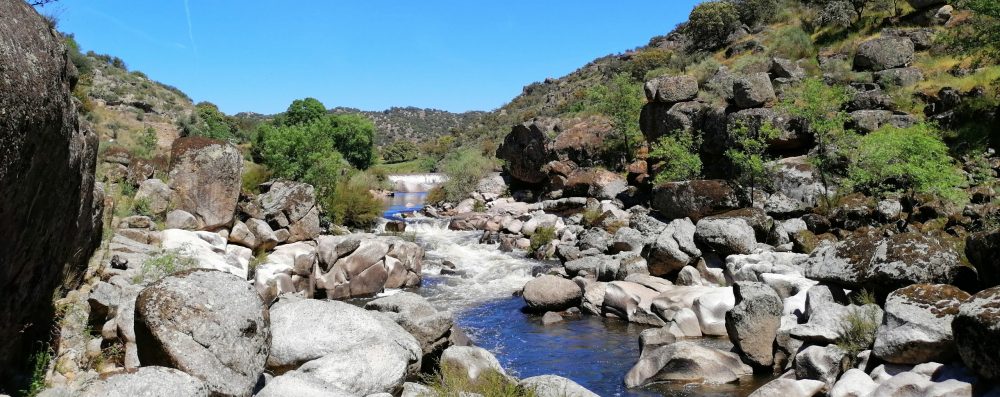SEMINAR 1 (February, 2024)
Programme
Day 1 (February 9, 2024)
9:30 – 9:45: Opening Session. Welcoming words to participants.
9:45 – 10:00: General overview of the MOSTMEG project (A. Mateus)
THE GÓIS-PANASQUEIRA-ARGEMELA-SEGURA STRIP
10:00 – 10:20 (+ discussion): Harmonised lithostratigraphy and structural arrangements; progress and issues open to debate (Í. Dias da Silva)
10:30 – 10:50 (+ discussion): Geochemical and mineralogical features of the Beiras Group metasediments; are they relevant to regional metal endowment? (I. Martins)
11:00 – 11:20 (+ discussion): Compositional attributes and geochronology of granite suites; implications to metallogenic processes (A. Mateus and I. Martins)
Coffee Break (11:30 – 12:00)
12:00 – 12:20 (+ discussion): What do mineralogical variations in contact metamorphic haloes tell us? (M. Cathelineau)
12:30 – 12:50 (+ discussion): What is the relevance of mapping regional shear zones? What constraints do these structures impose to the delimitation of Sn-W and Li-rich systems? (Í. Dias da Silva and A. Mateus)
Lunch Break (13:00 – 14:00)
NEW DATA ON SELECTED MINERALISING SYSTEMS
14:00 – 14:20 (+ discussion): Geological characteristics of the Argemela-Fundão, Mata da Rainha and Segura sectors (Í. Dias da Silva and A. Mateus)
14:30 – 14:50 (+ discussion): Geochemical and mineralogical features of the Li-rich aplite-pegmatite system of Segura (M. Cathelineau and M.-C. Boiron)
15:00 – 15:20 (+ discussion): Tin ores and fluids in the Segura district: from magmatic to hydrothermal stages (M.-C. Boiron and M.A. Guedes)
15:30 – 15:50 (+ discussion): The W-Sn quartz lodes of Mata da Rainha and related anomalous tourmalization; insights from integrated fluid inclusion analysis and boron isotopes (M.-C. Boiron)
Coffee Break (16:00 – 16:30)
16:30 – 16:50 (+ discussion): The nature of mineralising fluids involved in the Pedra-Alta (Sn-Li) and Vale Pião (W) systems (M.A. Guedes)
17:00 – 17:20 (+ discussion): Fluid evolution and PTX-t path during the long-lived magmatic systems related to Sn-W mineralizations Panasqueira, Mata da Rainha and Segura (M. Cathelineau)
Day 2 (February 10, 2024)
RELEVANT MINERAL/GEOCHEMICAL FINGERPRINTS/FOOTPRINTS TO ORE-FORMING SYSTEMS
9:30 – 9:50 (+ discussion): The usefulness of alluvial heavy minerals in the exploration of granite-related mineral systems; the case of Segura (R. Salgueiro)
10:00 – 10:20 (+ discussion): Indications provided by compositional variations recorded in TiO2 polymorphs and tourmaline (L.M. Gaspar)
10:30 – 10:50 (+ discussion): Trace element analysis of cassiterite and its effectiveness in the recognition of different provenances (L.M. Gaspar and P. Moita)
Coffee Break (11:00 – 11:30)
11:30 – 12:00: Display of materials on different stands/tables for consultation and discussion.
12:00 – 12:20 (+ discussion): Geochemical proxies to granite-related mineral systems using multi-element whole-rock analysis (I. Martins)
12:30 – 12:50 (+ discussion): Are the REE, U, and Th contents of zircon sensitive to magmatic-hydrothermal processes concurrent of mineralisation? (A. Mateus)
Lunch Break (13:00 – 14:00)
PRACTICAL TOOLS AND METHODS EASILY TRANSFERABLE TO EXPLORATION SURVEYS
14:00 – 14:20 (+ discussion): Production and characterisation of heavy minerals concentrates from alluvial sediments (R. Salgueiro)
14:30 – 14:50 (+ discussion): The use of mXRF to resolve textural and mineral arrangements (M. Cathelineau)
15:00 – 15:30 (+ discussion): Advantages of using the mineral-system approach in planning exploration surveys (A. Mateus)
15:30 – 16:00: Display of materials on different stands/tables for consultation and discussion.
Coffee Break (16:00 – 16:30)
16:30 – 17:00: Closing session. Ongoing work and what is expected to be concluded by June 2024. The next MOSTMEG Seminar.
